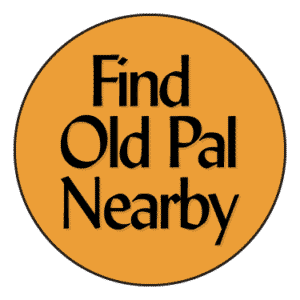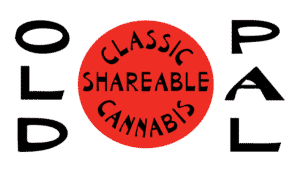September 03, 2019
Guest piece written by Brennan Ko-Madden from Fault Radio.
Nowadays, if you go to any festival or concert it’s more than likely that amongst the packed crowds and flashing lights you will catch a whiff of something dank. Yes, I mean weed smoke. Long ago, before the rise of mega festivals like Coachella people have discovered that the pairing of cannabis and music is intrinsically magnificent, akin to the universally loved flavor combination of salty and sweet.
Everybody that has experienced this pairing has a memory from their first time enjoying the two. Maybe it was listening to Led Zeppelin in your friends’ basement or maybe it was in your older siblings’ car listening to Snoop Dogg’s “Gin and Juice”. Whatever it was, you can never forget that moment after smoking cannabis where you realized you had never listened to music like this before.
But why do cannabis and music compliment each other so well?
A Brief History
To get an idea we can first learn from famous musicians of the past. Lindsey Buckingham of Fleetwood Mac once said, “If you’ve been working on something for a few hours and you smoke a joint, it’s like hearing it again for the first time.”
Cannabis has the unique ability to produce a shift in cognition that changes our perception of external stimuli like music. It is this change in cognition that musicians have cherished since the halcyon days of jazz in the early 20th century. Most famously, jazz pioneer Louis Armstrong himself is well known for his use of cannabis and in fact spoke about it candidly in his biographies.
Jazz musicians enjoyed using cannabis because of its ability to “stretch time”. The U.S. government’s “official expert” on cannabis from 1938 to 1962 was Dr. James Munch, a professor of physiology and pharmacology in the School of Pharmacology at Temple University in Philadelphia, PA. In his own words, Dr. Munch thought there was a clear reason why cannabis was popular amongst jazz musicians:
“Because the chief effect [of cannabis] as far as [jazz musicians] were concerned was that it lengthens the sense of time, and therefore they could get more grace beats into their music than they could if they simply followed the written copy… In other words, if you’re a musician, you’re going to play the thing the way it’s printed on a sheet. But if you’re using cannabis, you’re going to work in about twice as much music between the first note and the second note. That’s what made jazz musicians. The idea that they could jazz things up, liven them up, you see.”
But you shouldn’t take Dr. Munch’s word on the matter, after all, he famously testified under oath that smoking cannabis had turned him into a bat. However, Dr. Munch wasn’t too far off with his assessment when compared to the thoughts of jazz musicians around that time. Milton “Mezz” Mezzrow was a jazz musician through the Roaring Twenties that became known as one of Harlem’s best cannabis dealers. In his biography, Really the Blues, Mezzrow explains the effect cannabis had on his musicianship:
“The first thing I noticed was that I began to hear my saxophone as if it was inside my head… Then I began to feel the vibrations of the reed much more pronounced against my lip and my head buzzed like a loudspeaker. I found I was slurring much better and putting just the right feeling into my phrases. I was really coming on. All the notes came easing out of my horn as they’d already been made up, greased and stuffed into the bell, so all I had to do was to blow a little and send them on their way, one right after the other, never missing, never behind time, all without an ounce of effort.”
There’s no doubt that smoking cannabis changes your perception, which is particularly conducive to creative pursuits like creating music, but statements can only explain this phenomenon so far. To really understand what makes cannabis so influential to music we have to turn to science.
The Science
Studies of cannabis have revealed what many users have known for decades, in that, cannabis affects a person’s sense of timing. The quickening of our “internal clock” creates the effect of time passing around us at a slower rate. One particular study reported on by Leafly, has shown that a 15 second time interval was “expanded” to an average of 16.7 seconds while under the influence of cannabis (while sober controls correctly estimated this interval).
“If you look into the literature on timing, it seems to be that the brain systems that are influenced by cannabinoids are producing a state of mind in which there seems to be a slower backward counting,” says Jorg Fachner, professor of music, health, and the brain at Anglia Ruskin University in the United Kingdom. “And that means your timing units, the time frames that you are overseeing, seem to be enlarged. So those who are improvising seem to have a bit more time to foresee the melodic developments in improvisation and to fine grain the rhythmic patterns.”
While empirical studies of the effects of cannabis vary there seems to be evidence to suggest it is the alteration of internal timing that leads to enhanced perception. This includes having an enhanced ability to discern certain elements of a song because the alteration of perception comes to a shift in focus. This shift in focus created by cannabis can enable an individual to select or disregard certain information, which is fundamentally critical when performing activities like viewing art or listening to music.
Cannabis and Music Today
No matter what genre of music you enjoy, it can probably be said that cannabis has played a role in shaping the sounds and culture heard today. Cannabis helped define the message of love and self-discovery found in reggae music, with its most avid ambassador Bob Marley famously stating, “When you smoke the herb, it reveals you to yourself.” The Rastafari culture that spawned reggae music also used cannabis for religious ceremonies to help transcend thought before cannabis use became mainstream.
Elements of reggae culture eventually found their way into new electronic genres like Jungle and UK Dub. Heavily influenced by Afro-Caribbean immigrants, the sub-heavy basslines and reggae vocalists are evident throughout these genres. United Kingdom artists such as Congo Natty and Lee “Scratch” Perry have pioneered the fusion of classic reggae sounds with modern electronic rhythms and instruments. The resulting genres of Jungle and UK Dub follow directly behind a transplanted Rastafari culture that has historically been linked with cannabis use.
And of course, who could forget the influence of cannabis on Hip-Hop. The earliest mentions of getting high with cannabis from a rap group can be seen when the Beastie Boy’s released “Hold It Now Hit It” in 1986. Since then, mentions of cannabis have been constant with some of the most iconic tracks being “I Got 5 On It” by Luniz, referring to the cost of a dime-bag or gram of cannabis, “Crumblin’ Erb” by Outkast, or West Coast anthem “Gin and Juice” by Snoop Dogg. And who can forget Dr. Dre’s iconic cannabis-inspired album The Chronic that helped prepare the genre for future rappers like Wiz Khalifa.
Cannabis’ influence continues to this day, inspiring the emergence of new-age genres year after year. Electronic music has provided new sounds and textures for listeners to enjoy that cannabis will inevitably elevate. Online electronic music platforms like Fault Radio hosts a number of electronic music genres that are perfect for cannabis use, such as Ambient which is captivating with either passive or active listening.
The takeaway is that even if you don’t understand why cannabis and music go together, on some level you just know because if it wasn’t obvious before it should be now. To that end, Fault Radio and Old Pal are happy to partner to produce Oakland’s Shifting Plates Record Fair. Because music and cannabis belong together.
Sneak Peek to our Shifting Plates event powered by Old Pal
Written by Brennan Ko-Madden. Pictures by Mariah Tiffany
© Copyright 2022 Old Pal












